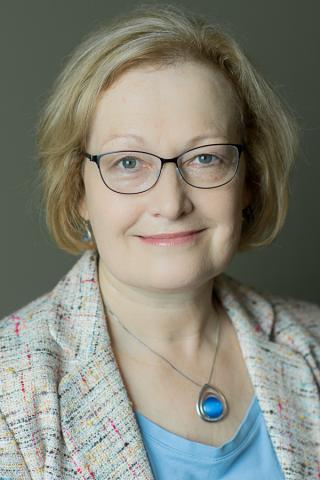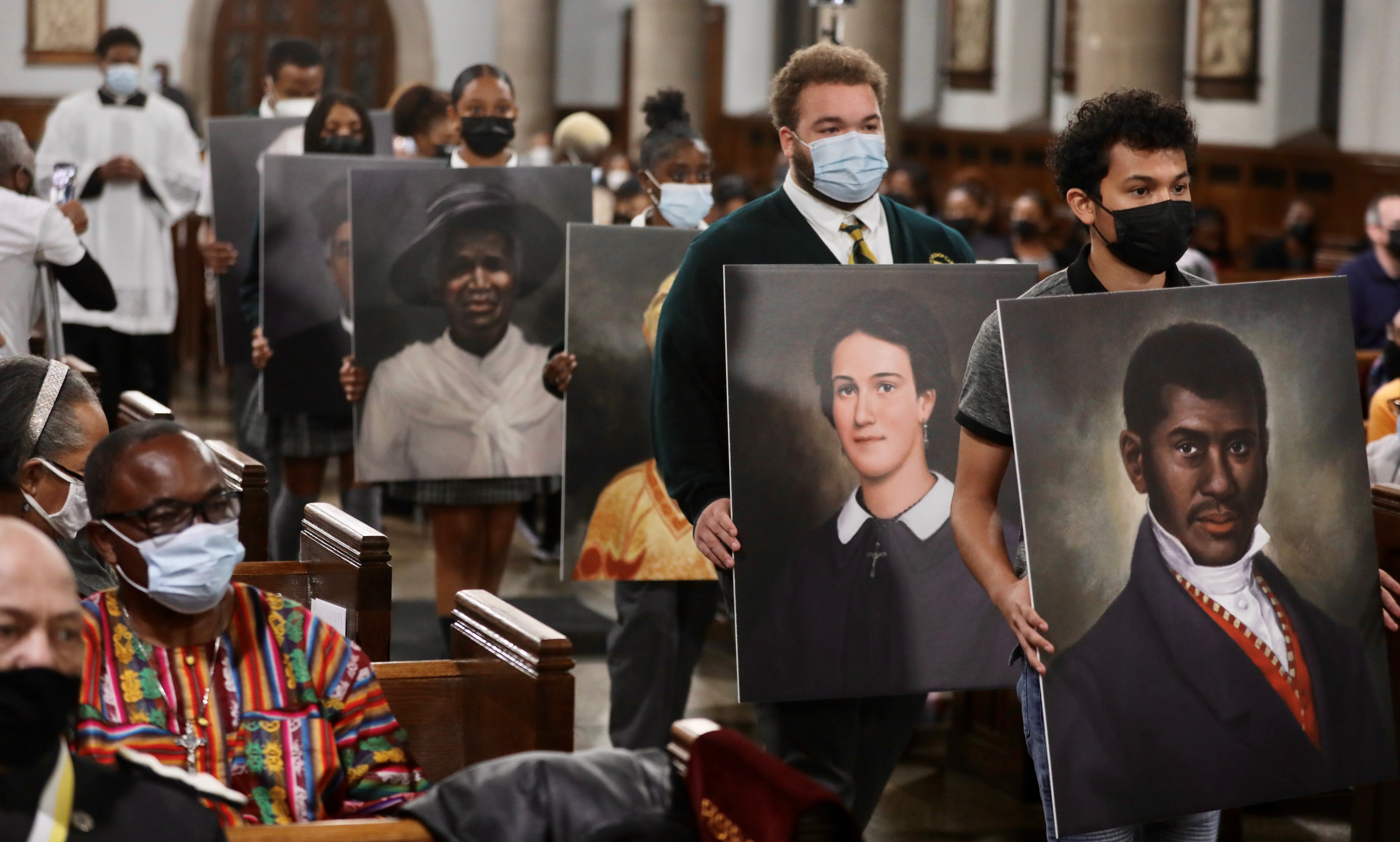At a joyous, hands-clapping, choir-swaying liturgy at Nativity Catholic Church in Washington, Black Catholic History Month was celebrated Nov. 20 in a festive combination with the day’s Feast of Christ the King.


While there was not quite a full church, the Saturday afternoon Mass at the parish carried hallmarks of pre-pandemic liturgical celebrations. The Howard University Beacon Liturgical Dance Ministry and the Gospel Mass Choir of The Roman Catholic Archdiocese of Washington set the tone with a prelude to the vigil Mass. Though the entire congregation wore face masks, muffling singing somewhat, their enthusiasm carried through in energy, clapping, periodic shouts of “Amen” and other exclamations.


In his homily, the main celebrant, Washington Auxiliary Bishop Roy E. Campbell Jr., covered both of the day’s celebrations. Addressing the Feast of Christ the King, he explained that the Gospel reading from John, normally heard on Good Friday, is significant for Jesus’s words to Pontius Pilate, making clear that “Jesus Christ is king of kings.” The passage includes the exchange between Pilate and Jesus in which the Roman governor asks Jesus “are you the King of the Jews?” Jesus’s reply includes the words, “my kingdom does not belong to this world. If my kingdom did belong to this world, my attendants would be fighting to keep me from being handed over to the Jews. But as it is, my kingdom is not here.”

As “a different kind of king. Jesus is different than any ruler, president or prime minister on Earth,” and his kingship is to remind people of one truth, God’s love for humankind, Bishop Campbell said. He added that like other rulers, Jesus has a throne which symbolizes his power and authority, reminding people he is not just another citizen, but the sovereign.
“Jesus, the king of the entire universe, has a throne that’s absolutely one of a kind,” the bishop said. “No other king in all of human history has chosen such a throne. Jesus’s throne presides over every Catholic church and every Catholic household…. It has been the mark of every Christian since the age of the catechumens. Jesus chose for his throne, the cross,” and instead of a throne of power, Jesus chose one on which he lay down.
Turning to Black Catholic History Month, Bishop Campbell noted that the history of Black Catholics “is an integral part of the history of our country. If not for them, we would not be what we are.” He told the stories of Black Catholic saints or prospective saints who “have given us an example of how we should be.”

At the offertory procession, portraits were placed near the altar of five U.S. Black Catholics who have been declared “servant of God,” or “venerable,” two preliminary steps to beatification and canonization, and Sister Thea Bowman, a member of the Franciscan Sisters of Perpetual Adoration and nationally known evangelist who died in 1990 and who is widely revered as a holy woman. In his homily, Bishop Campbell talked about two Catholic saints and the six as having led lives of hope and self-giving and held them up as examples of overcoming hatred and suffering to strive for human dignity for all.
In addition to Sister Thea Bowman, Bishop Campbell highlighted:
-- St. Martin de Porres, whose statue was placed near the altar, was a Peruvian son of a Spanish father and a freed slave mother. He was a member of the Dominican order, “not as a brother, not as a priest but as a servant, since a Black man could not take religious vows. Even in servitude he helped the poor. He helped anyone in need.”
-- St. Charles Lwanga, a Ugandan convert to Catholicism “who was martyred because he would not renounce his Christianity.”
-- St. Josephine Bakhita, a Sudanese woman who was kidnapped by slave traders, bought and sold so many times that she forgot her birth name, Bishop Campbell said. Eventually she went to Italy with the man who owned her, where she was placed with religious sisters who taught her, leading to her conversion and her life of holiness with the sisters.
-- Venerable Father Augustus Tolton, Venerable Henriette Delille and Venerable Pierre Toussaint.
-- Servants of God Mother Mary Elizabeth Lange and Julia Greeley.
“They loved when they were hated,” Bishop Campbell said of the group. “They forgave when they were being despised. They showed compassion and mercy though little of it was given to them.
He encouraged the congregation to follow their lead. “We stand on their shoulders and the shoulders of many others and we are called to do the same as Black Catholics today” Bishop Campbell said. They trusted in God’s mercy. They trusted in God’s grace. They believed in their people and they believed in their nation.”


At the end of the Mass, Father Robert Boxie III, the priest chaplain at Howard University and one of the concelebrants, called to Deacon Joseph Bell to be recognized for his 50 years in service to the university and to the archdiocese. He presented a glass plaque to Deacon Bell in appreciation of his service “as an educator, coach, administrator and advocate for students. Catholic ministry at Howard University would not be what it is without him.”












